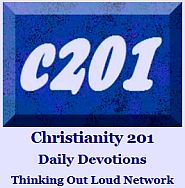I’ve been aware of the Together for the Gospel conference for a long time, but this week, through the miracle of live streaming and a schedule that coincided, I was able to catch a portion of many of the sessions, including a few sermons from beginning to end.
In many ways it reminded me of an experience a long time ago where I suddenly found myself immersed in a denomination that had always been completely foreign, attending an annual Easter Conference that consisted of speaker after speaker I had never heard of addressing content I was not fully grasping.
I came to this particular event a little better informed as to the subject matter and a great deal more familiar with the speakers, in some cases by reputation in other cases having read their blogs or books for quite some time.
Still, I am very much an outsider, and had I attempted to enter the event physically instead of virtually, I am sure that all manner of alarms would have been tripped. Better to view from a distance, I suppose.
I have a few takeaways from what I was able to catch over the three days that I believe are worth sharing. If you’ve never heard of T4G, this will be an introduction. On the other hand, if this is your tribe, you’ll see at least one person’s perception of the event and surrounding culture.

The Players
T4G is very much a product of what is sometimes called The New Calvinism, or the Young, Restless and Reformed movement. I saw evidence of four streams blending into the T4G pond; consisting of (from smallest to largest):
Presbyterian: I suspect this was the smallest constituency numerically, but Presbys are Reformed in doctrine. So maybe these are the cousins, what Holiness Movement denoms are to hardcore Pentecostals, perhaps. This is also probably considered the liberal wing of the Reformed set, but in balance, if you like your theology capital “L” liberal you probably don’t frequent conferences such as these that skew a little more small “e” evangelical.
Classical Reformed: By this I mean your standard purebred CRC (Christian Reformed Church) or RCA (Reformed Church of America) members, or historically Reformed variants on those two denoms. Dutch ancestry is optional, but it helps.
Southern Baptist: This is where I thought it gets interesting. There is some agreement that to some degree, 5-point Calvinism is becoming the doctrine de rigeur of the SBC, though not all welcome this. (Free Will Baptists are definitely a minority and Free Willy Baptists don’t even show in the stats.) So you see many prominent SBC-ers (more on that in a minute) showing up on panels and as speakers and lots of commercials for LifeWay (a Baptist cash cow) showing up on the giant screen.
New Calvinists: This is the primary target audience for the conference, these are also the people both great and small who dominate the Christian blogosphere and Christian publishing for that matter. (More on that later as well.) They appear to be one of the fastest growing sectors of Christianity right now, but again some of that has to with online perception; the internet was made for this movement, and this movement was made for the internet. It’s a mutually beneficial relationship. Doctrinally, we’re talking a more hardline 5-point Calvinism than many Classical Reformers. This also takes in sub-sectors such as the Acts 29 Network and the Sovereign Grace churches; and also close friends such as the Harvest Bible Fellowship churches.
The Conference Itself
The three day event in Louisville, KY as evidenced in the main, arena venue consisted of worship times, panel discussions and main speakers. Admittance was by wristband, which apparently one didn’t want to misplace. Grace is a key component of T4G teaching, but apparently it’s not universally applied. In general, I have no complaints with the conference structure…but that doesn’t make for interesting reading, so we’ll move on.
The Music
All of the music that I saw was led by Bob Kauflin, who I got to meet in the very early days of Glad, a “Jesus Music” band dating back to the late ’70s. Bob led from a grand piano facing the stage, so the live streaming consisted entirely of a medium closeup of Bob with a few audience members in the background. No band. No backup vocalists. I wondered if this is normative with the various types of churches represented in the audience.
The music was dominantly hymns with the addition of some Sovereign Grace music and modern-hymns of the Stuart Townend/Keith & Kristyn Getty variety. With almost each piece, Bob would stop playing so that phrases or entire stanzas could be sung a capella. This creates a rather amazing worship atmosphere — especially in a large arena — if not overdone. In my opinion, this was overdone.
At this point, I recognize I run the risk of irate comments, so let me say this is in no way personal. Kauflin is a respected leader in the field of worship music, though we disagree on some issues, such as making minor lyrical changes or the composition of extra verses by local church musicians. His track record in this field is laudable.
But as a musician and worship leader who has been in a similar situation — not once, but twice — I believe it’s time to think about a succession plan; to look toward passing the torch. Working in that direction begins by sharing the stage, by letting younger worship leaders try their wings. I am sure there are, within their movement, some younger musicians deserving of this honor.
The Books
No, I’m not talking about T4G’s finances. One of the things that really stood out to me was the constant reference to the conference bookstore. In addition to some books that delegates received gratis, there were books promoted by the chairperson for each session, and discussion panelists who mentioned a book were often informed seconds later that the particular title was indeed, available at the store.
As someone who loves books, obviously I feel this is commendable. But it’s also a reminder — and please hear this carefully — that this is a particular faith culture that is very much about words. Books, articles, blogs, etc. matter and matter a great deal. (There are very few Salvation Army bloggers, because they’re all out doing what the rest of us only write about.) Your future in the New Calvinist movement depends much on being aware of the latest encyclicals from the movement’s leaders, and participants seem to go deep, past conversational familiarity with the works in question.
Still, many of the books would be foreign even to mainstream Christian bookstore proprietors, which is why they are often sold through exclusive channels. I’ve written about this elsewhere, so we’ll move on.
The Superstars
I should say first that each denom has its own key people. Whether you attend a district conference, or a national one, there are certain people who, by whatever means, have risen to the top of the organizational hierarchy and are thereby held in high regard.
T4G is no different really. The composition of this year’s lineup — all male, by the way — is somewhat similar to the Venn diagram above, with a similar ratio of speakers and panelists representing different constituencies. Still, it seems to run to extremes here, with key leaders held in dangerously high esteem, and members of the rank and file working hard to be able to quote chapter and verse from their latest pronouncements. In a Q & A, someone asked via video if Albert Mohler would consider running for President of the United States. Was that tongue in cheek? I might have said ‘yes,’ were it not for the context.
Other main speakers included Kevin DeYoung, Mark Dever, John Piper, David Platt, Matt Chandler, John MacArthur, Thabiti Anyabwile, and Ligon Duncan. (These messages are soon to be posted.)
(As an aside, there was some discussion about a particular high-profile speaker who had recused himself from the conference several months earlier, but was then spotted on the front row, and as to whether you can have it both ways.)
The Gospel
There was definitely some great preaching. I would watch/listen to Kevin DeYoung a second time when that message comes online, and I am always personally challenged by the passion of David Platt.
But I’m always somewhat mystified by the constant references to “the gospel.” It reminds me of the movie The Princess Bride where Vizzini is constantly saying, “Inconceivable;” and finally in a scene Inigo Montoya finally says, “You keep using that word. I do not think it means what you think it means.”
The New Calvinists are constantly talking about “the gospel” and dare I say are obsessed with getting it right. But what particular aspect of this is in view? In my world, the gospel is Jesus. If we speak more about the good news, but not so much about the content of that evangel, then I think we’re allowing ourselves to be party to a mammoth distraction. It would be interesting to know what the word-count was for “Jesus” versus “gospel” in remarks made from the platform.
(One of their number once used the term “real friends of the gospel” to describe New Calvinist churches, implying that others are not.)
In fairness, some of the sessions did address things like the need to share our faith, but you have to remember that this is a community that has historically looked askance at the seeker-sensitive strategy, abhors topical preaching and has been openly critical of anything involving the word missional. I believe that such a verbal witness would be constrained to somewhat limited parameters of their choosing.
Conclusion
I am thankful for the opportunity to get more than a passing glimpse into this particular event. If the option exists, I would definitely try to clear more time to watch in 2016. I think that as the larger, capital “B” Body of Christ, we really don’t know each other. There was some great preaching, and I have better insight into the core values and central issues for the constituencies represented at T4G. There is much we can learn from people of different denominational stripes, and I can only hope my Reformed brothers and sisters would tune in equally for a Wesleyan or Anabaptist or Charismatic convention.
As an outsider, I am always concerned if the passing of time is bringing us — in this case Calvinists and non-Calvinists — closer together or farther apart. My hope is the former, but reality suggests the latter. As the group represented by T4G grows, I see it becoming more entrenched; there is increasing tribe/brand loyalty, a type of religious jingoism, increasing isolation; and all this is a loss for people on both sides of the divide.
Lighter moments: Check out the Twitter feed Not the T4G
Image: Church-At-Our House Graphics
Related: Defining Calvinism versus Arminianism












There is a growing trend of New Calvinist pastors in SBC churches. There is something of a resistance from the other end of the spectrum, referring to the increased presence of extreme 5-point Calvinists as a cancer spreading among Southern Baptist leadership.
John Piper is an incredible preacher. I probably have no less than a dozen Piper books on my shelf. I am not a Calvinist but enjoy listening to Piper because he doesn’t berate my beliefs by insisting they exactly match his.
Comment by Clark Bunch — April 11, 2014 @ 8:15 am
Interesting. All new to me . . .
Comment by meetingintheclouds — April 12, 2014 @ 4:46 am
Paul, you have done an excellent job in defining these different branches of the Christian faith. Incredibly articulated and illustrated. I have a real concern about the “New Calvinists” and often wonder if they would consider me to be apostate because I don’t embrance TULIP the same way they do. I share Clark Bunch’s comments about John Piper. Keep up the good work, Paul. I read Thinking Out Loud every day. God bless!
Comment by David Fisher — April 12, 2014 @ 8:07 am
Thanks, a well articulated report.
There are very few Salvation Army bloggers, because they’re all out doing what the rest of us only write about.
I loved this line…
Comment by Trevor Morgan — April 15, 2014 @ 8:51 pm
I understand where you are coming from. But the Bible does say narrow is the way and more narrow is the door…so don’t you think that would call for a certain amount of separation and isolation among the true believers and those who are not?
Comment by Boatwright — September 28, 2015 @ 12:39 pm
I guess this depends if you’re looking at this from the inside or the outside. On the outside of this movement are Wesleyans, Methodists, Brethren-in-Christ, Plymouth Brethren, Free Will Baptists, Pentecostals, Salvation Army, Christian & Missionary Alliance, etc; all of which would not consider themselves to outside of the realm of, to use your term, “true believers.” Again, your term, “those who are not;” scares me just a little.
Comment by paulthinkingoutloud — September 28, 2015 @ 7:06 pm